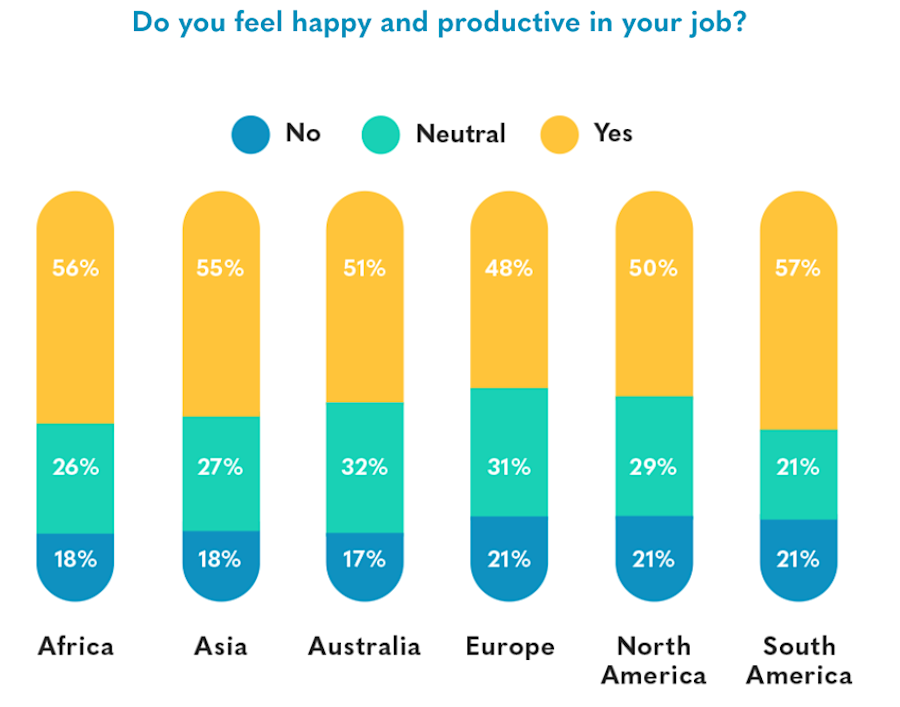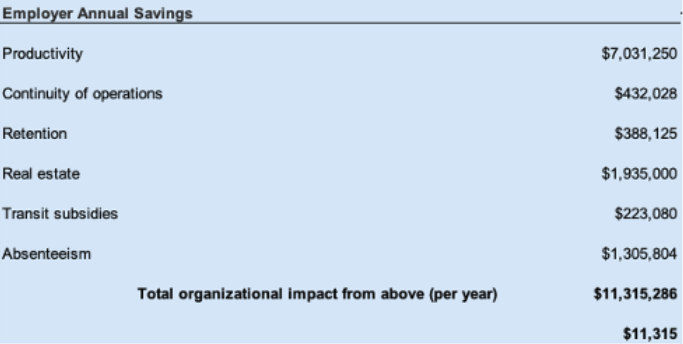The COVID-19 pandemic has brought businesses around the world to a crossroads:
Either adapt to the “new normal,” or shut down indefinitely—perhaps even permanently.
For many organizations, this means shifting from traditional, on-premise operations to working remotely
It’s a push-comes-to-shove, do-or-die moment.
And it certainly won’t be easy.
For companies that don’t currently operate remotely, transitioning during these trying times isn’t ideal.
Still, it’s not like working remotely is anything new.
Many companies—Leadfeeder included—have been operating remotely for years.
This isn’t because they’ve been forced to, either; it’s because it works.
Sure, transitioning to remote operations may be your only option for survival at the present moment.
But, doing so can also lead to incredible things for your business—both now and once things return to “normal.”
That said, let’s take a look at the key ways building a virtual team can be beneficial to your business.
Remote teams are more productive
Time for a hot take:
The more productive your team is, the more successful your business will be.
Okay, okay...that’s not exactly a point of contention—but it doesn’t make it any less true.
The fact is, virtual teams are much more productive than those that work strictly in a traditional office setting.
This applies on an individual and team-wide basis.
First of all, employees who are able to work remotely feel more productive across the board.
Employees who work remotely at least once a month feel 24 percent more productive at all times—even when they’re working on premise.

(Note this study also touched on happiness and job satisfaction. More on this in a bit.)
FlexJobs also found that 65 percent of employees feel more productive when working at home than when working in the office.
But, it’s not just that employees “feel” more productive when working from home.
They actually are more productive.
Case in point:
Global Workplace Analytics estimates that if half of the US workforce were able to work from home just half of the time, it would add five million man-hours to the economy.
In monetary terms, this would equate to an extra $270 billion injected into the US economy.
Again, this is only if half of the workforce spent half of their working hours operating remotely.
It’s easy to imagine these numbers would only increase as virtual teams become more prevalent.
(That is, assuming companies take a strategic approach to it all, of course.)
Remote teams are more efficient
Efficiency goes hand-in-hand with productivity—but there’s a bit more to it, as well.
Again, let’s look at both the individual and company-wide impact virtual operations can have on workplace efficiency.
Everyone knows that the full-time workday is typically eight hours long, right?
Well...it turns out that most of that time is not spent on meaningful or productive work.
In fact, studies show that the average employee works less than three hours per day. The rest of that time is spent taking care of menial tasks at best—and non-work related activities at worst.
Simply put:
On-premise employees waste a ton of time, resources, and capital. That’s certainly not good for business.
As Flexjob’s study found, there are many reasons on-premise employees experience so much downtime:
Fewer distractions
Fewer interruptions from colleagues (work-related or otherwise)
Quieter noise levels
...and many other situations that will ring true for anyone who has worked in a traditional office setting.
Do remote employees face disruptions when working from home? Of course.
But, they’ll have more control over their personal work environment, overall.
The flexibility offered by remote work means employees can work whenever, wherever, and however they’re best able to complete the tasks they’re responsible for.
Also worth noting is that working remotely minimizes or eliminates wasted time and resources in more tangential areas for employees.
For example, Global Workplace Analytics’ study shows that remote employees can save up to $7,000 annually by not having to commute to work.
They also get up to three weeks of their life back per year by not having to sit in stop-and-go traffic on their way to and from work.
This isn’t even taking into consideration costs associated with childcare and other aspects of the work-life balance.
This increase in efficiency and cost-effectiveness will lead to higher levels of satisfaction for employees on a professional and personal level.
(Who doesn’t want to have more time and money on hand, right?)
Looking at company-wide efficiency and cost-effectiveness, remote operations can be a huge boon for your business.
Think about it:
Since you won’t be operating on-premise, this means you won’t have to exhaust capital on a number of expenses, such as:
Real estate or office rentals
Utilities
Maintenance and custodial operations
Office supplies
Day-to-day purchases (e.g., coffee, donuts, and other “essentials”)
Dell, for example, has saved roughly $12 million annually by allowing many of its employees to work remotely.
Using its Telework Savings Calculator, Global Workplace Analytics estimates that the average company would save around $11,000 per employee each year by enabling remote work.

(We’ll talk about some of the other factors mentioned in this chart in a moment.)
So, to recap:
Companies that operate remotely are not only more productive than on-premise organizations—they also make much better use of the resources and capital they have on hand.
If you’re doing more while spending less, you’ve found a recipe for true business success.
Remote companies acquire and retain top talent
Bringing aboard high-quality employees—and keeping them onboard—is always the name of the game.
Remote teams are at a major advantage on both ends, here.
Looking at talent acquisition, virtual teams can search for and recruit talent from a much wider geographical area than their on-premise counterparts.
Sure, businesses that operate in a physical area certainly can work to engage with candidates from around the globe.
But, logistically speaking, they’re much more likely to attract those who live within the general vicinity of their offices.
Basically, the physical barrier can be just that: A reason for a given candidate to think twice about moving away from their home to join the team.
In contrast, if your company operates remotely, you won’t have to require prospective employees to uproot their lives in order to work with you.
In taking your talent search worldwide, you’ll be able to seek out the best-fit employee for the position at hand—rather than settling for the best of what’s around.
It’s not just that operating remotely allows you to look for top-tier talent, either. You’ll also attract more high-quality job candidates, as well.
More than 70 percent of employee candidates say remote options are “somewhat” to “extremely” important when applying for a position
Of those who see remote options as a deciding factor in their job search, 78 percent are college graduates—with 28 percent having earned a graduate degree
On average, qualified candidates from younger generations (millennials and Gen Z’ers) rate remote working options as an eight on a scale of one to ten
The writing is on the wall:
Companies that don’t operate remotely in at least some capacity just cannot attract the high-quality employees needed to succeed in the world today.
Even if a non-remote company does land some talented individuals, they aren’t going to be able to keep them onboard for long.
This is straight from the mouths of said talented individuals:
According to Owl Labs, 82 percent of loyal employees cite their ability to work remotely as a key reason for sticking with their organization.
And their employers agree:
95% of managers and owners say providing remote working options has had a positive impact on their ability to retain top-notch employees.
To be sure, many other factors play into an organization’s ability to attract and retain high-quality workers.
Still, the fact remains:
If you don’t provide your team members the ability to work from home, they’re going to find a company that does.
Conclusion
To be clear, all of the statistics discussed throughout this article were collected during “normal” times.
But, with the current global shutdown all but forcing industries around the world to go virtual (or give up completely), it’s more important than ever to take these stats to heart.
Yes, it’s probably going to be an uphill battle to transition to virtual operations in the midst of this pandemic.
And yes, your competitors who had already been operating virtually are likely at a huge advantage.
The upside, though, is two-fold:
For one, you’ll be able to weather the looming storm to at least some degree—and hopefully keep your business moving forward while many of your competitors will have shut down.
What’s more, if you can survive this trial by fire, it’ll be much easier to optimize your remote operations once things get “back to normal.”
Get more from your web analytics.
t’s time to turn your website traffic data into something more meaningful. Website visitor analytics enable you to identify and qualify the companies visiting your website, even when they don’t fill out a form.
Show me how




